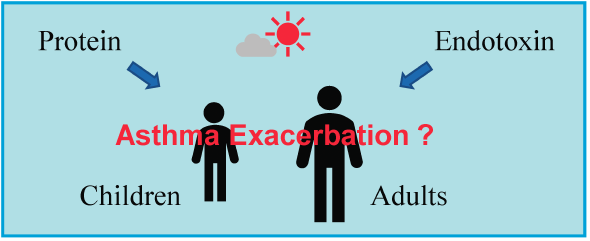- 著者
- Mamoru ONUMA Misao TERADA Sadaharu ONO Akiyoshi MURAKAMI Tomoko ISHIDA Tadashi SANO
- 出版者
- JAPANESE SOCIETY OF VETERINARY SCIENCE
- 雑誌
- Journal of Veterinary Medical Science (ISSN:09167250)
- 巻号頁・発行日
- vol.79, no.8, pp.1446-1452, 2017 (Released:2017-08-18)
- 参考文献数
- 32
- 被引用文献数
- 7
Propofol is an anesthetic agent suspended in an emulsion system that includes egg yolk lecithin and soybean oil, because of which, there is concern about the use of propofol in patients allergic to these substances. We examined the association between propofol administration and incidence of adverse events in dogs with allergy to egg yolk lecithin and soybean oil. On the basis of the findings of an allergen-specific immunoglobulin E (IgE) test, 14 dogs with high levels (high-IgE group) and 7 dogs with low levels (normal-IgE group) of IgE were selected. Following intravenous administration of propofol, the incidence of anaphylactic reactions and plasma histamine concentrations under general anesthesia maintained with isoflurane throughout surgery were compared between the two groups. The frequency of anaphylactic reactions and plasma histamine concentrations were compared by the chi-square test and Student t-test, respectively. The statistical significance for both tests was set at P<0.05. In the high- and normal-IgE groups, the average frequencies of anaphylactic reactions after propofol administration were 21.4 and 14.3%, and the mean plasma histamine concentrations were 167.9 ± 94.5 nM and 65.7 ± 40.3 nM, respectively. Animals of neither groups experienced shock-like symptoms. These results revealed that propofol might be relatively safe, although careful perioperative anesthesia monitoring and standby protocols are required when using propofol in dogs with a history of allergic diseases or high chicken- or soybean-specific IgE levels.
- 著者
- Tomoko Ishida Mohammad Shahriar Khan Honami Kodama Yukiko Uejima Yumi Kawase Takahiro Matsumoto Yuki Yamamura Nobuyuki Sera Takao Gotou Masaaki Hirakawa Yoshitaka Yano Masayuki Shima Nobuyuki Yamagishi Keiji Wakabayashi Tetsushi Watanabe
- 出版者
- The Pharmaceutical Society of Japan
- 雑誌
- Biological and Pharmaceutical Bulletin (ISSN:09186158)
- 巻号頁・発行日
- vol.43, no.9, pp.1361-1366, 2020-09-01 (Released:2020-09-01)
- 参考文献数
- 27
We examined the association of biological components in airborne particles, i.e., proteins and endotoxins, in outdoor air with asthma exacerbation in the Fukuoka metropolitan area, Fukuoka, Japan. Data on emergency department (ED) visits for asthma in children (age, 0–14 years) and adults (age, 15–64 years) were collected at a medical center from December 2014 to November 2015. One hundred eighty-one children and 143 adults visited the ED for asthma, and the weekly number of ED visits in children increased in autumn, i.e., September (second week) to November (first week). Fine (aerodynamic diameter ≤2.5 µm) and coarse (≥2.5 µm) particles were collected for 3 or 4 weeks per month, and protein and endotoxin concentrations were analyzed. Protein was largely prevalent in fine particles (0.34–7.33 µg/m3), and concentrations were high in April, May, June, and October. In contrast, endotoxin was mainly included in coarse particles (0.0010–0.0246 EU/m3), and concentrations were high in September (third week), October (first, second, and fourth weeks), February (fourth week), and July (first week). The results of a Poisson regression analysis indicated that endotoxin (in fine and coarse particles alike) was a significant factor for ED visits related to asthma in children, even after adjusting for meteorological factors, i.e., temperature, relative humidity, and wind speed. However, there was no association between environmental factors and ED visits for asthma in adults. These results suggest that endotoxin in outdoor air is significantly associated with an increased risk of asthma exacerbation in children.
- 著者
- Mamoru ONUMA Misao TERADA Sadaharu ONO Akiyoshi MURAKAMI Tomoko ISHIDA Tadashi SANO
- 出版者
- 公益社団法人 日本獣医学会
- 雑誌
- Journal of Veterinary Medical Science (ISSN:09167250)
- 巻号頁・発行日
- pp.16-0550, (Released:2017-07-14)
- 被引用文献数
- 7
Propofol is an anesthetic agent suspended in an emulsion system that includes egg yolk lecithin and soybean oil, because of which, there is concern about the use of propofol in patients allergic to these substances. We examined the association between propofol administration and incidence of adverse events in dogs with allergy to egg yolk lecithin and soybean oil. On the basis of the findings of an allergen-specific immunoglobulin E (IgE) test, 14 dogs with high levels (high-IgE group) and 7 dogs with low levels (normal-IgE group) of IgE were selected. Following intravenous administration of propofol, the incidence of anaphylactic reactions and plasma histamine concentrations under general anesthesia maintained with isoflurane throughout surgery were compared between the two groups. The frequency of anaphylactic reactions and plasma histamine concentrations were compared by the chi-square test and Student t-test, respectively. The statistical significance for both tests was set at P<0.05. In the high- and normal-IgE groups, the average frequencies of anaphylactic reactions after propofol administration were 21.4% and 14.3%, and the mean plasma histamine concentrations were 167.9 ± 94.5 nM and 65.7 ± 40.3 nM, respectively. Animals of neither groups experienced shock-like symptoms. These results revealed that propofol might be relatively safe, although careful perioperative anesthesia monitoring and standby protocols are required when using propofol in dogs with a history of allergic diseases or high chicken- or soybean-specific IgE levels.
